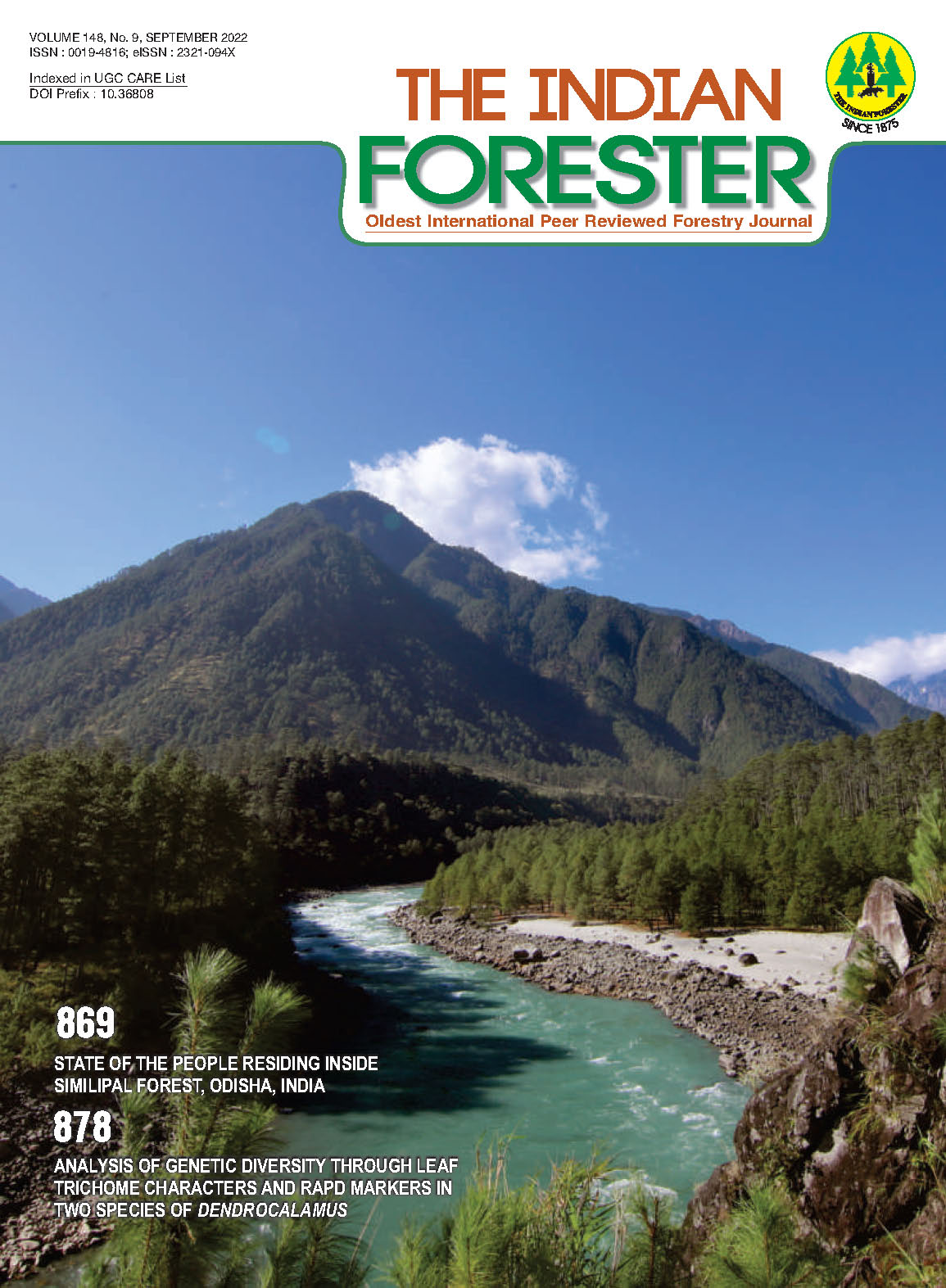Temporal Change of Land Use /Land Cover (LULC) Over a Decade (2005-2016) in Jamnagar Municipal Corporation, Gujarat, India
DOI:
https://doi.org/10.36808/if/2022/v148i9/159933Keywords:
LULC change, Jamnagar, Gujarat, RS-GISAbstract
The Jamnagar city in Gujarat state is one of the important industrial hubwhich has shown changes in Land Use/Land Cover (LULC) along with time. In
the current study, the LULC changes of Jamnagar Municipal Corporation
(JMC) have been assessed and understood over a decade (2005-2016).
During the study, whole area of JMC was classified into 4 categories i.e.open
tree coves, built-up area, open land and water bodies based on remote
sensing data. The interpretation and analysis of study showed that open tree
cover got increased by 73.45 ha from 486.66 ha in 2005 to 560.11 ha in 2016,
while, the open land area has declined by 613.90 ha from 11237.93 ha in 2005
to 10624.03 ha in 2016 which probably got converted into the built-up area
which showed an increase of 565.25 ha from 1034.17 ha in 2005 to 1599.42 ha in 2016. Moreover, the water body area has also changed drastically across
the years and declined by 24.80 ha from 88.24 ha in 2005 to 63.44 ha in 2016. This information of different land categories of JMC can be used in town
planning and land administration of Jamnagar city in sustainable manner.
References
Ahmad S., Avtar R., Sethi M. and Surjan A. (2016). Delhi"s Land Cover Change in Post Transit Era. Cities, 50: 111-118.
Census of India (2011). District Census Handbook Jamnagar; Village and Town Directory, Jamnagar, Gujarat: Directorate of Census Operation.
Dissanayake D., Morimoto T., Murayama Y. and Ranagalage M. (2019). Impact of Landscape Structure on varriation of land surface temprature in Sub-Suharan region: A case study of Addis Ababa using Landsat data (1986-2016). Sustanabilty, 11(8): 1-18.
Kumar Y.H. and Nyamathi S.J. (2019). Application of RS & GIS for morphometric analysis of Aghnashini River Watershed. National Conference on Futuristic Technology in Civil Engineering for Sustanable Development (pp. 13-17). Bengaluru: SJB Institute of Technology.
Liu P., Jia S., Han R., Liu Y., Lu X. and Zhang H. (2020). RS and GIS supported Urban LULC and UHI Change Simulation and Assessment. J. Sens., 1-17. doi:https://doi.org/10.1155/2020/ 5863164.
Samal D.R. and Gedam S.S. (2015). Monitoring land use changes associted with urbanisation: An object base image analysis Approach. Eur. J. Remote. Sens., 48(1): 85-99.
Singh A. (1986). A Reviewe Article: Digital Change Detection Techniques Using Remotely Sensed data, Int. J. Remote Sens., 10: 989-1003.
Soltaninejad M., Jafari M., Noroozi A. and Javadi S.A. (2020). Evaluation of Vegetation Changes in desertification projects using remote sensing techniques in Bam,Sahdad and Garmsar regions, Iran, Casp. J. Environ. Sci., 19(1): 47-57.
Yesmin R., Mohiuddin A.S., Uddin M.J. and Shahid M.A. (2014). Land use land cover change detection at Mirzapur Union of Gazipur district of Bangladesh using remote sensing and GIS technology. 7th IGRSM International Remote Sensing and GIS conference and exhibition. 20, pp. 1-9. IOP Publishing.
Gardani L., Lominadze G. and Tsitsagi M. (2018). F assessment of landuse/ landcover (LULC) change of Tbilisi and sourrounding area using remote sensing (RS) and GIS, Ann. Agrar. Sci., 16(1): 163-169.
Downloads
Downloads
Published
How to Cite
Issue
Section
License
Unless otherwise stated, copyright or similar rights in all materials presented on the site, including graphical images, are owned by Indian Forester.





